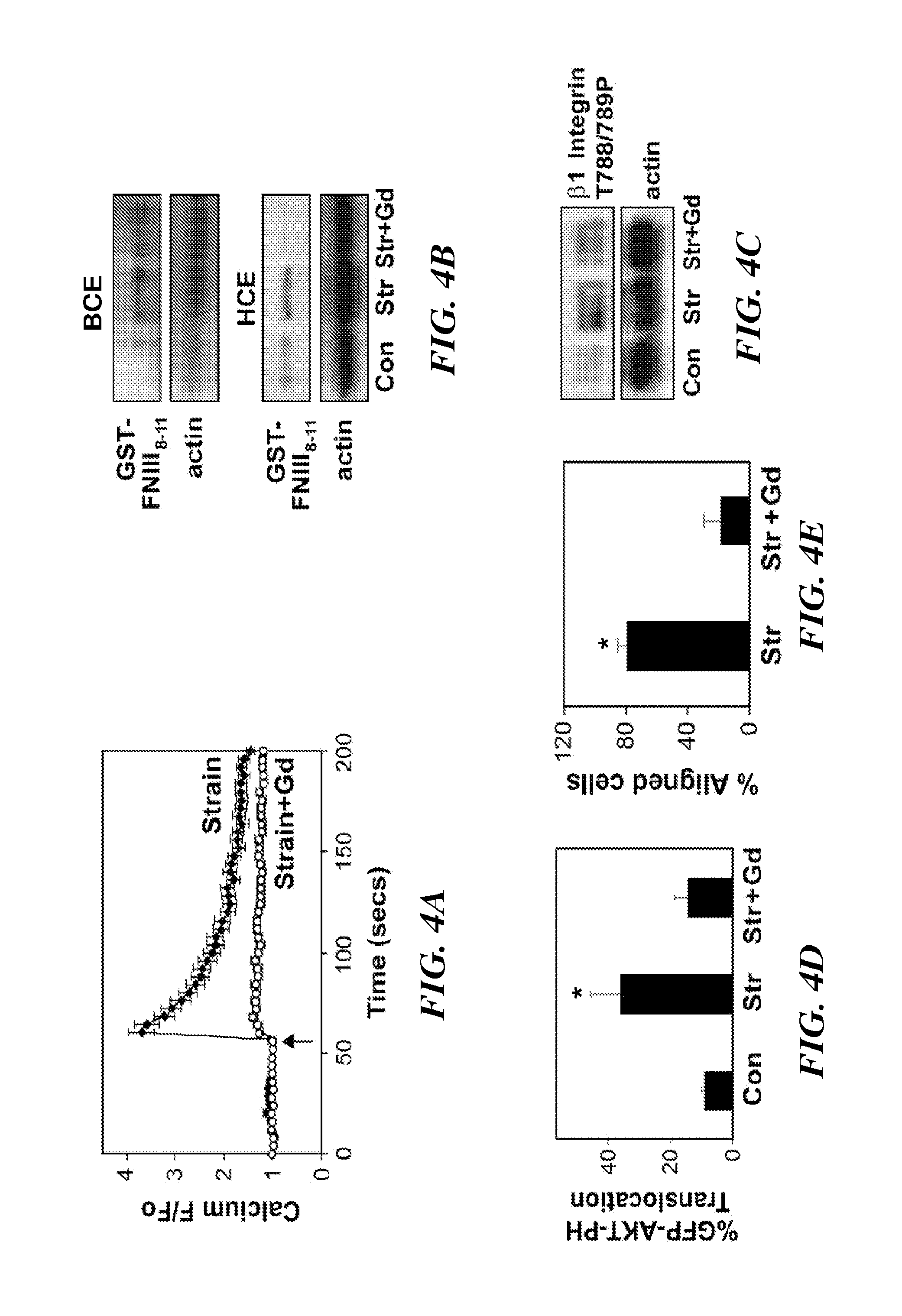Methods of modulating angiogenesis via TRPV4
a technology of angiogenesis and modulation, applied in the field of modulation of angiogenesis via trpv4, can solve the problems of pathological angiogenesis, various diseases, debilitating conditions, etc., and achieve the effect of reducing the migration of capillary endothelial cells
- Summary
- Abstract
- Description
- Claims
- Application Information
AI Technical Summary
Benefits of technology
Problems solved by technology
Method used
Image
Examples
example
Materials and Methods
Cell Cultures
[0316]Bovine CE cells (passage 10 to 15) were maintained at 37° C. in 10% CO2 on gelatin-coated tissue culture dishes in low glucose Dulbecco's Modified Eagle's Medium (DMEM; INVITROGEN™ Inc.) supplemented with 10% fetal calf serum (FCS) (HyClone), 10 mM HEPES (JRH-Biosciences) and L-glutamine (0.292 mg / ml), penicillin (100 U / ml), streptomycin (100 μg / ml) (GPS), as described in Matthews, et. al. (J Cell Sci., 119:508-518 (2006)). Human microvascular endothelial cells from dermis (HMVECs) (Cambrex, Walkersville, Md.) were cultured in EBM-2 (Cambrex), supplemented with 5% FBS and growth factors (bFGF, IGF, VEGF) according to the manufacturer's instructions.
Materials
[0317]Antibodies against activated β1 integrin (clone 12G10) were from ABD Serotec and those directed against T788 / 789 of β1 integrin cytoplasmic tail, and phosho FAK pY-397 were from Biosource™ International / MILLIPORE®. ALEXA®-conjugated phalloidin and secondary antibodies were from MOLECU...
PUM
| Property | Measurement | Unit |
|---|---|---|
| diameter size | aaaaa | aaaaa |
| capillary density | aaaaa | aaaaa |
| concentration | aaaaa | aaaaa |
Abstract
Description
Claims
Application Information
 Login to View More
Login to View More - R&D
- Intellectual Property
- Life Sciences
- Materials
- Tech Scout
- Unparalleled Data Quality
- Higher Quality Content
- 60% Fewer Hallucinations
Browse by: Latest US Patents, China's latest patents, Technical Efficacy Thesaurus, Application Domain, Technology Topic, Popular Technical Reports.
© 2025 PatSnap. All rights reserved.Legal|Privacy policy|Modern Slavery Act Transparency Statement|Sitemap|About US| Contact US: help@patsnap.com



